The deadlift is possibly one of the exercises that can bring the greatest benefits to our muscles and our general strength due to the amount of muscles involved in it. However, it also has the counterpoint of being one of the exercises in which it is easier to injure oneself if we do not have adequate preparation and technique, and an injury performing this exercise can be quite serious.
Discover how to execute the deadlift with a perfect technique to protect your back and avoid injuries that can have you in the dry dock during a good season or that permanently compromise your health such as herniated discs.
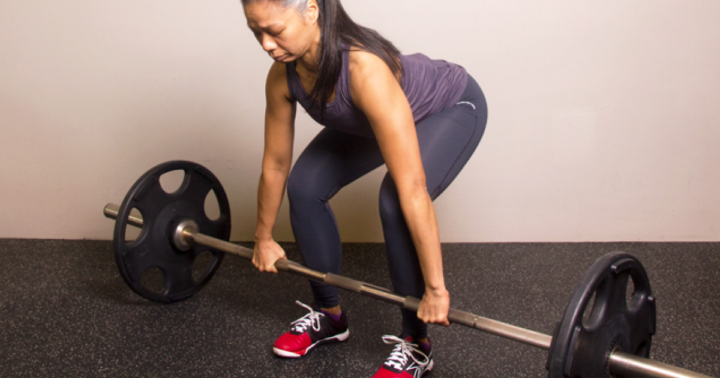
What muscles are involved in the deadlift?
As we have just pointed out, there are several muscle groups that intervene when executing the deadlift within our routine, and although we are not going to detail the muscles one by one, we will analyze the large groups that intervene in their performance.
- Lower body muscles: within the lower body, the main part that will intervene will be the hamstring muscles (although the entire lower body works).
- Musculature of the gluteal area: the buttocks will also be demanded during the performance of this exercise and they will benefit from it in almost equal parts.
- Back muscles: the back muscles are going to be the critical area of this exercise and with which we are going to run the greatest risks of injuring ourselves if we do not perform an adequate technique and have a solid base. Contractures, pulls and ultimately hernias, are some of the injuries that we can suffer doing this exercise.
- Upper body muscles: due to the position and mechanics of the exercise, the muscles of our upper body (mainly arms and shoulders) will also be involved during its journey.
A point that we must also work to avoid scares is the grip strength of our hands, since the greater the weight we handle, we will need a greater grip strength so that the bar does not slip away.
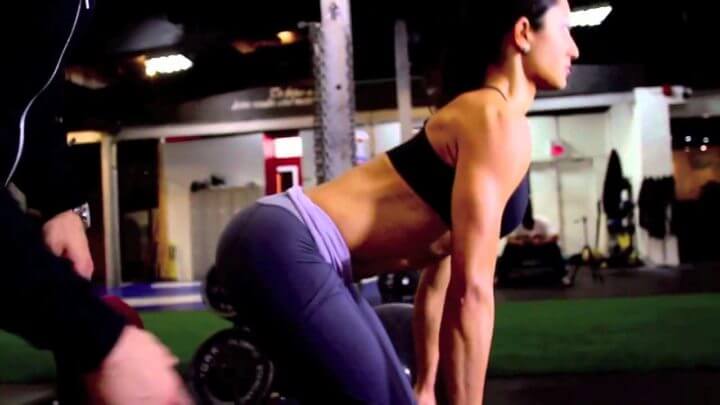
How important is dead weight to our health?
Jason Li, a trainer at the Soho Strength Lab in New York, notes: ” The deadlift is a functional move for anyone who has to lift things regularly.”
Asking the most renowned trainers, most have agreed that those muscles that most need improvement are usually the glutes and hamstrings, hence the deadlift is one of the best (if not the best) exercise. that we can do.
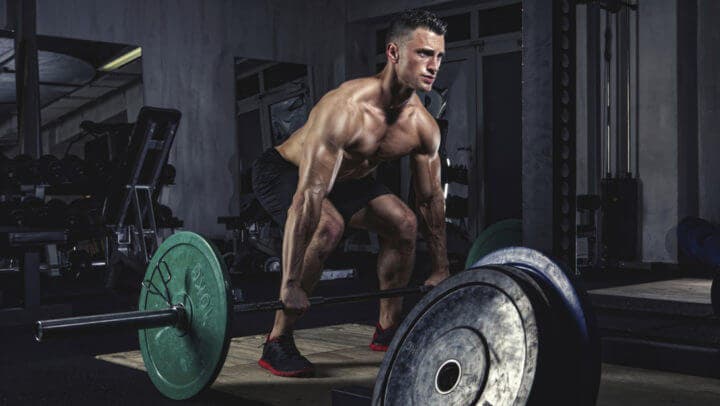
6 tips for performing a safe and efficient deadlift
1. Get a solid foundation
Undoubtedly the most important point and the basis of all the time to get to work the deadlift, is t ener a solid base, and this is achieved by paying attention to two points:
- The posture (which we can work with a PVC stick and based on repetitions and more repetitions).
- The basic strength, to be able, at least, to be able to work with the Olympic bar (20 kilos of weight).
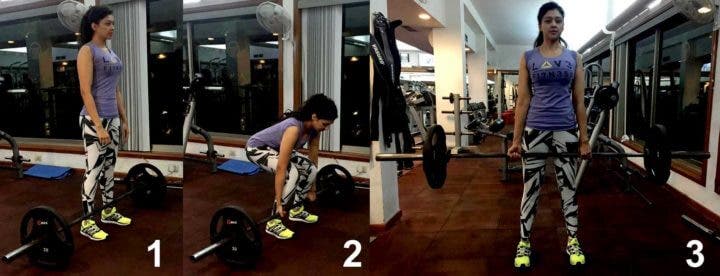
2. “Feel” your back
It is important to be aware at all times and have an adequate perception of the musculature and position of our back. To understand it: in the lowering phase, our back must be kept in a neutral position and not arch , in order to avoid damage to the vertebral discs (it is calculated that, approximately, for every 5 degrees of inclination or arching of the spine, increases intervertebral pressure by 20-30%).
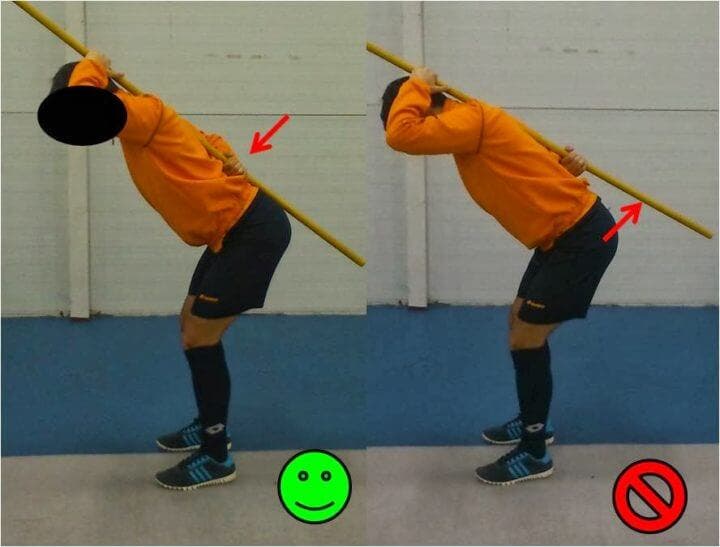
3. Keep your knees slightly bent
In order to avoid excessive tension in the hamstrings and resulting problems in our knees, it is advisable to always maintain a slight flexion of the same throughout the movement (except when we already adopt an upright posture at the end of it). In addition, we must try to keep the weight on our heels at all times, which will give us a more stable posture.
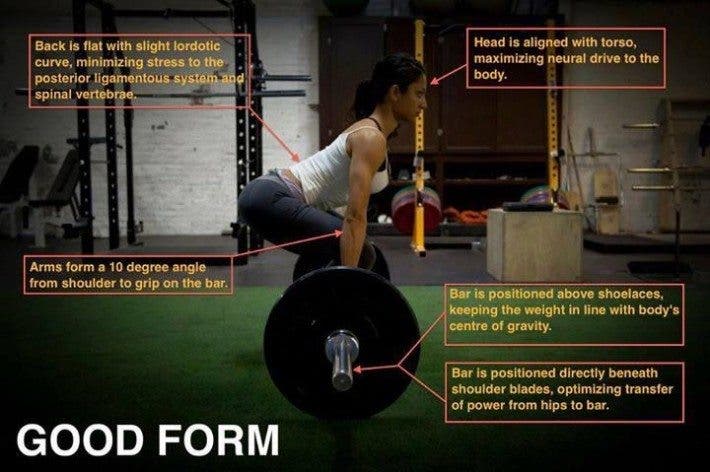
4. Make sure to involve the core
A key point when it comes to preventing injuries performing deadlifts is to make sure that our core is activated throughout the movement (what we usually call compacting).
By tightening the abdominal section, we will release pressure on the lumbar area, and this will give us greater stability at the core level to avoid the dreaded back injuries.
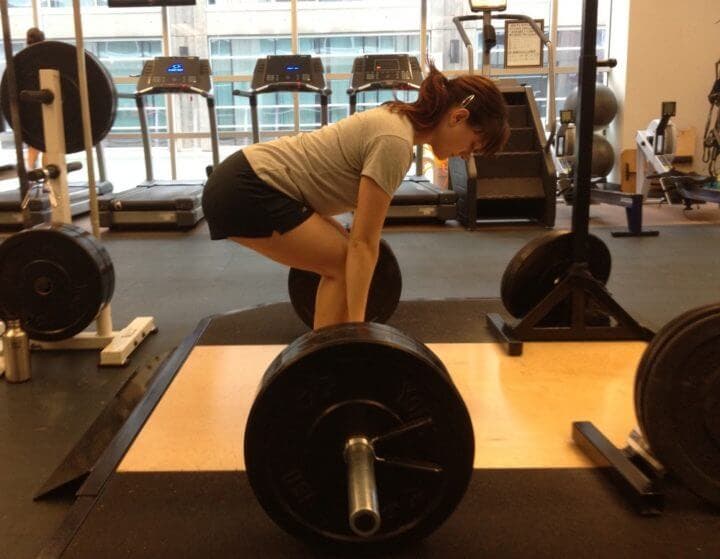
5. Skip the hip hyperextension at the end of the movement
Something common to see, especially in people who perform heavy deadlifts , is the realization of a small hyperextension of the hips at the end point of the movement.
Unfortunately, the only thing that we will achieve with this hyperextension, no matter how small, is to increase the tension in the lower area of our back , so we will be generating an unnecessary risk of injury.
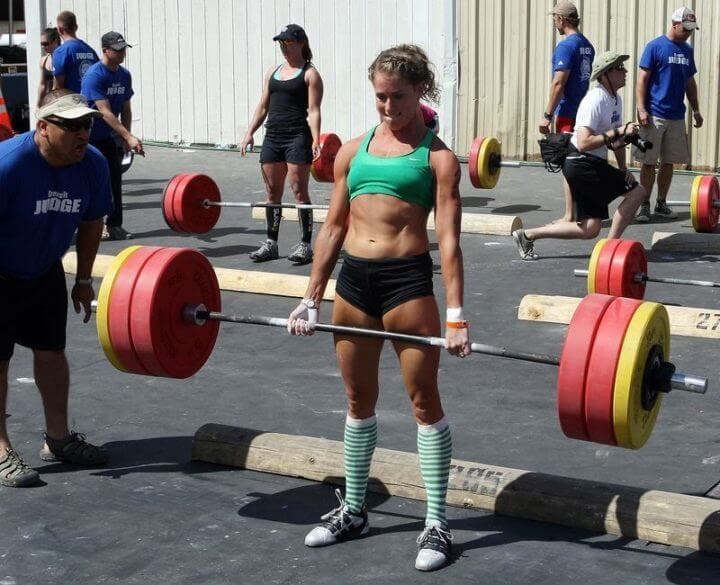
6. Maintain the neutrality of the neck
Looking forward or upward during the execution of the deadlift means breaking the neutrality of the hip-shoulders-neck axis and this, as we have been saying, is adding options to suffer an injury.

References
- Mallory Crevellin. For DailyBurn. How to do a dead lift with perfect form. [Revised October 2017]